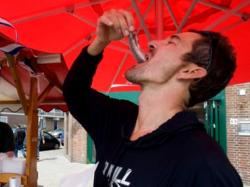A Plan Is Floated To Build Following For New Herring
June 25, 2010 | 2 min to read

SCHEVENINGEN, the Netherlands — Over the years, France has built the November release of Beaujolais nouveau into a worldwide event, with wine drinkers eagerly snapping up bottles of what is, by most measures, a pedestrian wine. So if it can be done for cheap wine, then why not for herring?
The answer may seem self-evident, but not to the Dutch, who are trying to manage the same marketing feat with Hollandse Nieuwe (pronounced HO-land-suh NYEW-uh), or new herring, which arrives in local waters in the month of June. Traditions surrounding its appearance are as venerable as those of the French. Throughout the Netherlands, people throw new-herring parties, sharing the fish with neighbors and friends.
For as long as anyone in this seaside resort, now a district of The Hague, can remember, the first barrel of new herring has been sold at public auction. This year the barrel, with 45 filleted herring, went for $70,000, or $1,555 for each herring, to Makro, a chain of discount retailers, which sent them to a local restaurant. The money goes to charity, said Makro’s managing director, Jean-Pierre Bienfait, every bit a Dutchman despite his French name, adding, “Obviously, it’s very symbolic for the new harvest.”
So important are herring to Scheveningen that the town’s coat of arms features three herring, each wearing a golden crown. In the old days the herring boats went out for the first catch decorated with flags, so now in mid-June the town decks itself out around the fishing harbor for Flag Day, with old Dutch games like stilt-walking and can-throwing, townsfolk dressed in traditional dress and puppet shows in the old local dialect.
To read the rest of the story, please go to: The New York Times.
Photo by Herman Wouters for The New York Times
